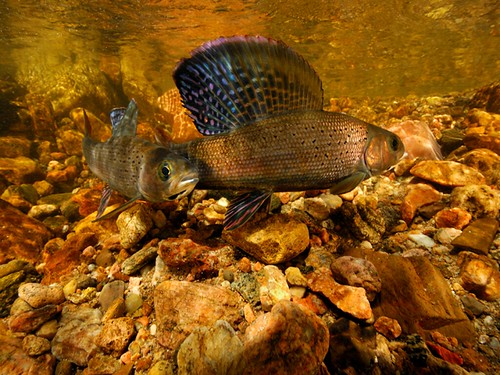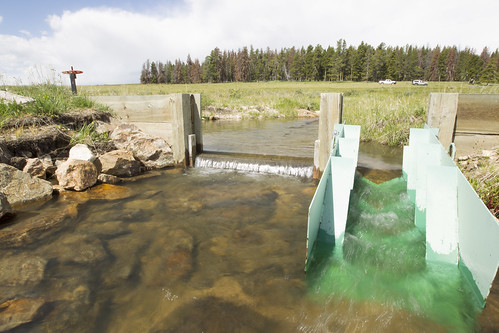
The distinct sail-like dorsal fin of the Arctic grayling set the species apart from other members of the Salmonidae family.
You’ve seen those markers on storm drains that say: “No dumping. Drains to river.” Or to a “lake” or “creek.” It’s a reminder that what we do on the land has a direct impact on a body of water somewhere.
Many of our nation’s farmers, ranchers and forest landowners are taking steps to ensure they’re sending cleaner water downstream. The positive outcomes of this stewardship abound. From Oklahoma to Mississippi, we’ve seen once impaired streams heal. And in waterways from Montana to Minnesota, we’ve seen struggling species rebound.
Creeks, streams, rivers and lakes all provide critical wildlife habitat for many species.
Fluvial Arctic Grayling
In the spectacular Big Hole River basin in southwestern Montana, where USDA’s Natural Resources Conservation Service (NRCS) partnered with other state and federal agencies and ranchers to help the fluvial Arctic grayling, a fish in the trout, salmon and whitefish family.
Reduced stream flows, degraded riparian habitat and man-made migration barriers contributed to the historic decline of this freshwater fish.
Through a partnership with state agencies, the U.S. Fish and Wildlife Service (FWS) and NRCS, ranchers took steps to use water more wisely, improve riparian habitat and remove barriers to fish migration. Ranchers installed a variety of conservation practices from fencing to fish ladders.
Over the past 10 years, the grayling population has demonstrated that it has high genetic diversity and has significantly increased its population size. The grayling’s rebound was mostly attributed to the public-private partnership that led to better habitat for the fish. In 2014, the FWS determined that protections under the Endangered Species Act were not needed.

Coldwater streams, like Pine Creek, are enriched with limestone, which provides essential minerals for aquatic insects, a common food of fish.
Brown Trout
Next, let’s head to the Driftless Area, a unique Midwestern landscape marked by its craggy limestone, sandstone valleys and steep hillsides. There, coldwater streams provide critical brown trout habitat. High amounts of sediment can cover the bottom of streams, preventing trout from spawning.
Farmers like Ryan Pulley are taking steps to keep nearby streams clean. Pulley has worked to restore and protect Pine Creek, which wanders through his land where he raises beef in southeastern Minnesota.
Pulley worked with NRCS to stabilize and smooth the sides of the creek as well as plant native shrubs and grasses. This restoration work benefits Pulley and his land because it safeguards his pastures against erosion. It also helps improve water quality, preventing sediment from polluting the shallow stream.
Broader Benefits
Arctic grayling and brown trout are among many species that benefit from good land management. NRCS provides technical and financial assistance to farmers to help them implement conservation practices on their land.
To learn more about NRCS’ conservation efforts to benefit wildlife, check out our new Working Lands for Wildlife magazine: A Partnership for Conserving Landscapes, Communities and Wildlife for more information. For more on technical and financial assistance available through NRCS conservation programs, visit your local USDA service center.

The fluvial Arctic grayling travels many miles each year between seasonal habitats. Fish ladders installed in irrigation structures are extremely effective at managing irrigation flows and the passage of fish.
No comments:
Post a Comment
Note: Only a member of this blog may post a comment.